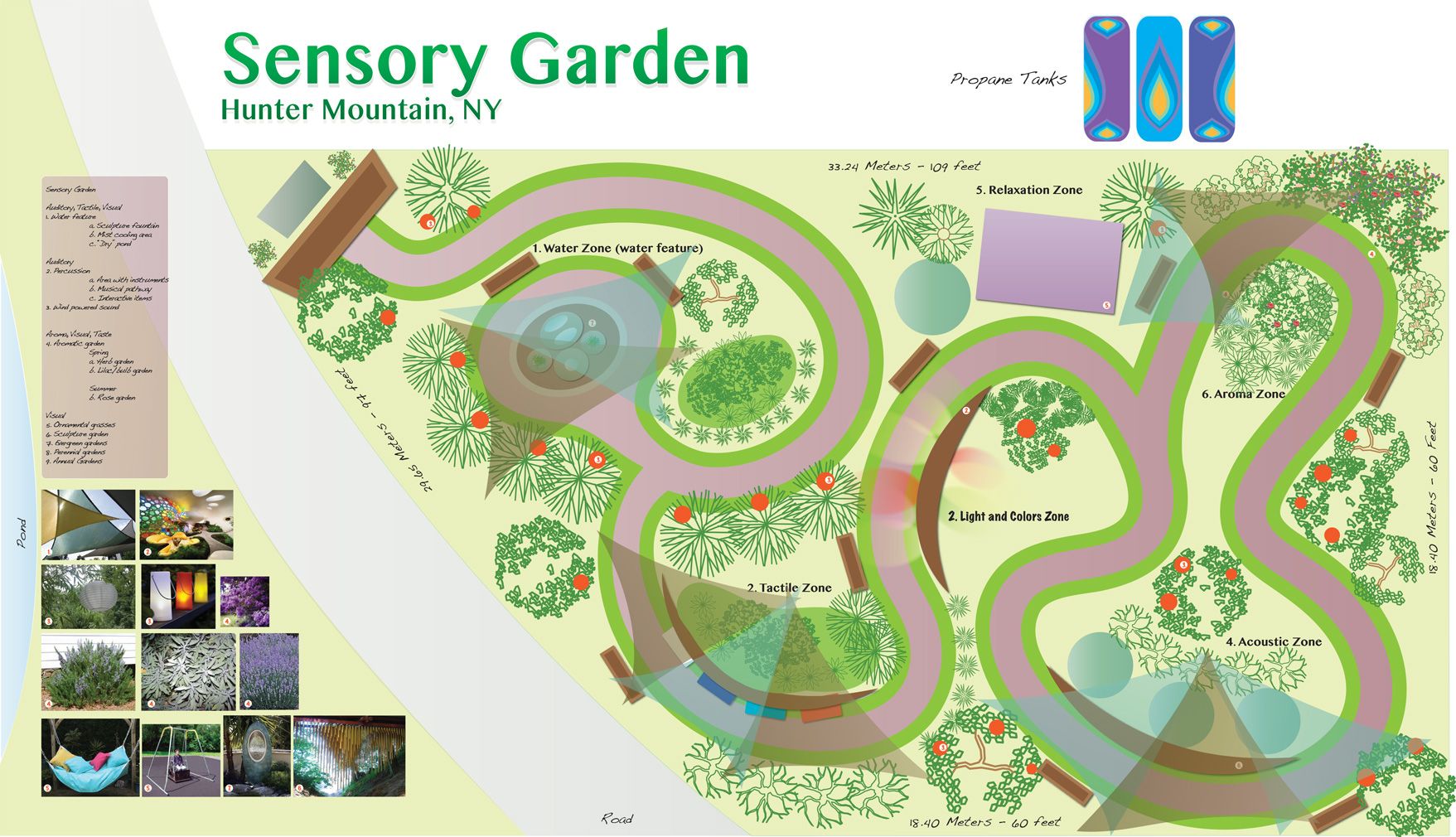
Unveiling the Enigmatic Charm: Designing Your Own Captivating Outdoor Labyrinth
Imagine stepping into a world where every turn sparks curiosity, where the gentle rustle of leaves whispers secrets, and where the simple act of walking becomes a meditative journey. This isn’t a fantasy; it’s the reality you can create by designing your own outdoor labyrinth. More than just a maze, a labyrinth is a symbol of wholeness, a pathway to self-discovery, and a captivating addition to any outdoor space. This comprehensive guide will walk you through every step of crafting your own mesmerizing labyrinth, transforming your garden, backyard, or any outdoor area into a haven of tranquility and intrigue.
The Allure of the Labyrinth: Why Design One?
Before we delve into the ‘how,’ let’s explore the ‘why.’ The appeal of a labyrinth extends far beyond its visual beauty. It’s a profoundly engaging experience that offers a multitude of benefits:
- A Pathway to Mindfulness: Walking a labyrinth is a walking meditation. The repetitive path allows your mind to quiet, fostering a sense of calm and presence.
- A Symbol of Transformation: The journey through a labyrinth often mirrors life’s journey, with its twists, turns, and moments of clarity. It represents a path towards self-discovery and growth.
- A Connection with Nature: An outdoor labyrinth seamlessly blends with the natural environment, encouraging a deeper appreciation for the beauty of the outdoors.
- A Unique Aesthetic Appeal: Labyrinths are visually stunning, adding a touch of mystery and elegance to any landscape. They become a focal point, sparking conversation and inspiring awe.
- A Space for Community: Labyrinths can be shared spaces, inviting friends, family, and even the wider community to experience the magic of the path together.
Whether you seek solace, spiritual enrichment, or simply a captivating garden feature, a labyrinth offers a unique and rewarding experience. It’s a testament to the power of simple design to create profound impact.
Planning Your Outdoor Labyrinth: Laying the Foundation
Designing a labyrinth is a project that requires careful planning. Before you even think about digging or planting, consider these essential factors:
1. Location, Location, Location: Choosing the Right Spot
The location of your labyrinth is paramount. Consider the following:
- Sunlight: Choose a location that receives ample sunlight, ideally for several hours a day. This will ensure your plants thrive and the labyrinth is enjoyable to traverse.
- Soil Conditions: Assess the soil quality. Is it well-draining? Does it need amendments? Healthy soil is crucial for the longevity of your labyrinth.
- Accessibility: Ensure easy access to the labyrinth. Consider pathways leading to it and the overall flow of your outdoor space.
- Size and Shape: Determine the size and shape of your labyrinth. This will depend on the available space and your personal preferences. Larger labyrinths offer a longer, more immersive experience.
- Privacy: Consider the level of privacy you desire. A secluded location will enhance the meditative experience.
2. Design Choices: Selecting Your Labyrinth Type
There are several types of labyrinth designs to choose from. The most common include:
- Classic Cretan Labyrinth: This is the most recognizable design, a single path that winds its way to the center. It’s simple yet profoundly impactful.
- Chartres Cathedral Labyrinth: Inspired by the famous labyrinth in Chartres Cathedral, this design features multiple circuits and a more intricate path.
- Reversible Labyrinth: This design allows you to choose your path in or out, adding an element of surprise and complexity.
- Modern Labyrinth: These designs can incorporate more abstract patterns and artistic elements, allowing for greater creativity.
Research different designs and choose one that resonates with you and fits your space. Consider the level of complexity you’re comfortable with, as more complex designs require more planning and construction.
3. Materials: What Will Your Labyrinth Be Made Of?
The materials you choose will influence the aesthetics and durability of your labyrinth. Here are some options:
- Plants: Hedges are a classic choice, providing a living, breathing structure. Consider boxwood, lavender, rosemary, or other plants suitable for your climate.
- Stone: Stone pathways and borders offer a natural and durable option. Use flagstones, gravel, or even reclaimed materials.
- Wood: Wooden planks or timbers can create defined pathways and borders.
- Gravel or Mulch: These materials can be used to define pathways, creating a contrast with the surrounding vegetation.
- Grass: A grass labyrinth offers a softer, more natural feel. However, it requires regular maintenance, including mowing and edging.
When selecting materials, consider their longevity, maintenance requirements, and aesthetic appeal. Choose materials that complement your overall landscape design.
Constructing Your Outdoor Labyrinth: Bringing Your Vision to Life
Once you’ve finalized your plans, it’s time to start building! Here’s a step-by-step guide to constructing your outdoor labyrinth:
1. Marking the Path: The Blueprint on the Ground
Before you start digging or planting, you need to accurately mark the path of your labyrinth. Here’s how:
- Create a Scale Drawing: Use graph paper or a digital design tool to create a scale drawing of your labyrinth. This will serve as your blueprint.
- Use Stakes and String: Mark the center of your labyrinth and use stakes and string to outline the circular or geometric shape.
- Transfer the Design: Using your scale drawing, transfer the labyrinth path to the ground. You can use stakes and string to define the edges of the path. Alternatively, use spray paint or landscape marking paint.
- Accuracy is Key: Ensure the accuracy of your markings. A precise path is crucial for the overall experience of the labyrinth.
2. Preparing the Ground: Soil and Pathways
Prepare the ground according to your chosen materials:
- For Planted Labyrinths: Clear the area of weeds and debris. Till the soil to a depth of 12-18 inches and amend it with compost or other organic matter to improve drainage and fertility.
- For Stone or Gravel Pathways: Excavate the pathways to a depth of several inches. Lay down a layer of landscape fabric to prevent weed growth. Add a base layer of gravel or crushed stone, followed by your chosen pathway material.
- For Wooden Pathways: Level the ground and install a foundation of gravel or crushed stone. Then, install your wooden planks or timbers, ensuring they are level and securely anchored.
- Consider Drainage: Ensure proper drainage to prevent waterlogging, especially in areas with heavy rainfall.
3. Planting or Installing the Borders
Now, it’s time to bring your labyrinth to life!
- Planting Hedges: Plant your hedges according to your design, spacing them appropriately to allow for growth. Water them regularly and provide adequate care to ensure they thrive.
- Installing Stone or Wood Borders: Install your stone or wood borders along the marked pathways. Ensure they are level and secure.
- Filling Pathways with Gravel or Mulch: Fill the pathways with your chosen material, ensuring it is evenly distributed and compacted.
- Watering and Mulching: Water your plants thoroughly and apply mulch around them to retain moisture and suppress weed growth.
4. Finishing Touches: Adding Personality
Once your labyrinth is constructed, add finishing touches to enhance its beauty and create a more inviting space:
- Add Seating: Place benches or seating areas within or near the labyrinth to provide spaces for contemplation and rest.
- Install Lighting: Add lighting to illuminate the labyrinth at night, creating a magical ambiance. Consider solar-powered lights for ease of installation.
- Incorporate Water Features: Integrate a small fountain or pond to add a soothing element to the space.
- Add Decorative Elements: Incorporate sculptures, statues, or other decorative elements to personalize your labyrinth and reflect your personality.
- Plant Flowers and Groundcover: Plant colorful flowers and groundcover plants to add visual interest and soften the edges of the labyrinth.
Maintaining Your Outdoor Labyrinth: Ensuring Longevity
Regular maintenance is essential to keep your labyrinth looking its best and ensure its longevity. Here are some tips:
- Pruning Hedges: Regularly prune your hedges to maintain their shape and prevent them from becoming overgrown.
- Weeding: Regularly weed the pathways and surrounding areas to prevent weeds from detracting from the beauty of the labyrinth.
- Watering and Fertilizing: Water and fertilize your plants as needed to keep them healthy and vibrant.
- Repairing Pathways: Repair any damaged pathways or borders as needed.
- Cleaning: Regularly clean the pathways of debris and fallen leaves.
By following these maintenance tips, you can ensure that your labyrinth remains a captivating and enjoyable space for years to come.
Beyond the Basics: Elevating Your Labyrinth Experience
Once your labyrinth is complete, consider these ideas to enhance the experience even further:
- Themed Labyrinths: Create a themed labyrinth, such as a herb garden labyrinth or a butterfly garden labyrinth.
- Interactive Elements: Incorporate interactive elements, such as chimes, wind sculptures, or stepping stones with inspirational quotes.
- Guided Meditations: Develop guided meditations specifically for walking the labyrinth, enhancing the meditative experience.
- Community Events: Host community events, such as labyrinth walks, workshops, and gatherings.
- Seasonal Transformations: Adapt your labyrinth to the seasons, adding seasonal flowers, decorations, and activities.
The possibilities are endless. Let your creativity guide you, and transform your labyrinth into a unique and enriching space.
Troubleshooting Common Labyrinth Challenges
Even with careful planning, you may encounter challenges. Here are some common issues and how to address them:
- Overgrown Hedges: Prune hedges regularly to prevent them from becoming overgrown and blocking the path.
- Weed Infestation: Regularly weed the pathways and apply mulch to suppress weed growth.
- Poor Drainage: Improve drainage by amending the soil, installing drainage systems, or raising the pathways.
- Path Deterioration: Repair any damaged pathways or borders promptly.
- Lack of Interest: If your labyrinth isn’t attracting visitors, try adding more visually appealing elements, hosting events, or promoting it within your community.
Don’t be discouraged by challenges. With a little effort, you can overcome any obstacles and create a thriving labyrinth.
Conclusion: Embark on Your Labyrinth Journey
Designing an outdoor labyrinth is a rewarding endeavor that brings beauty, tranquility, and a touch of mystery to your outdoor space. By carefully planning, constructing, and maintaining your labyrinth, you can create a haven for reflection, self-discovery, and community connection. So, take the leap, embrace the challenge, and embark on your own labyrinth journey. The path awaits, filled with endless possibilities.
Remember, the process of creating a labyrinth is just as enriching as experiencing it. Enjoy the journey, and let your imagination guide you. Your unique outdoor labyrinth will become a cherished space for years to come.



